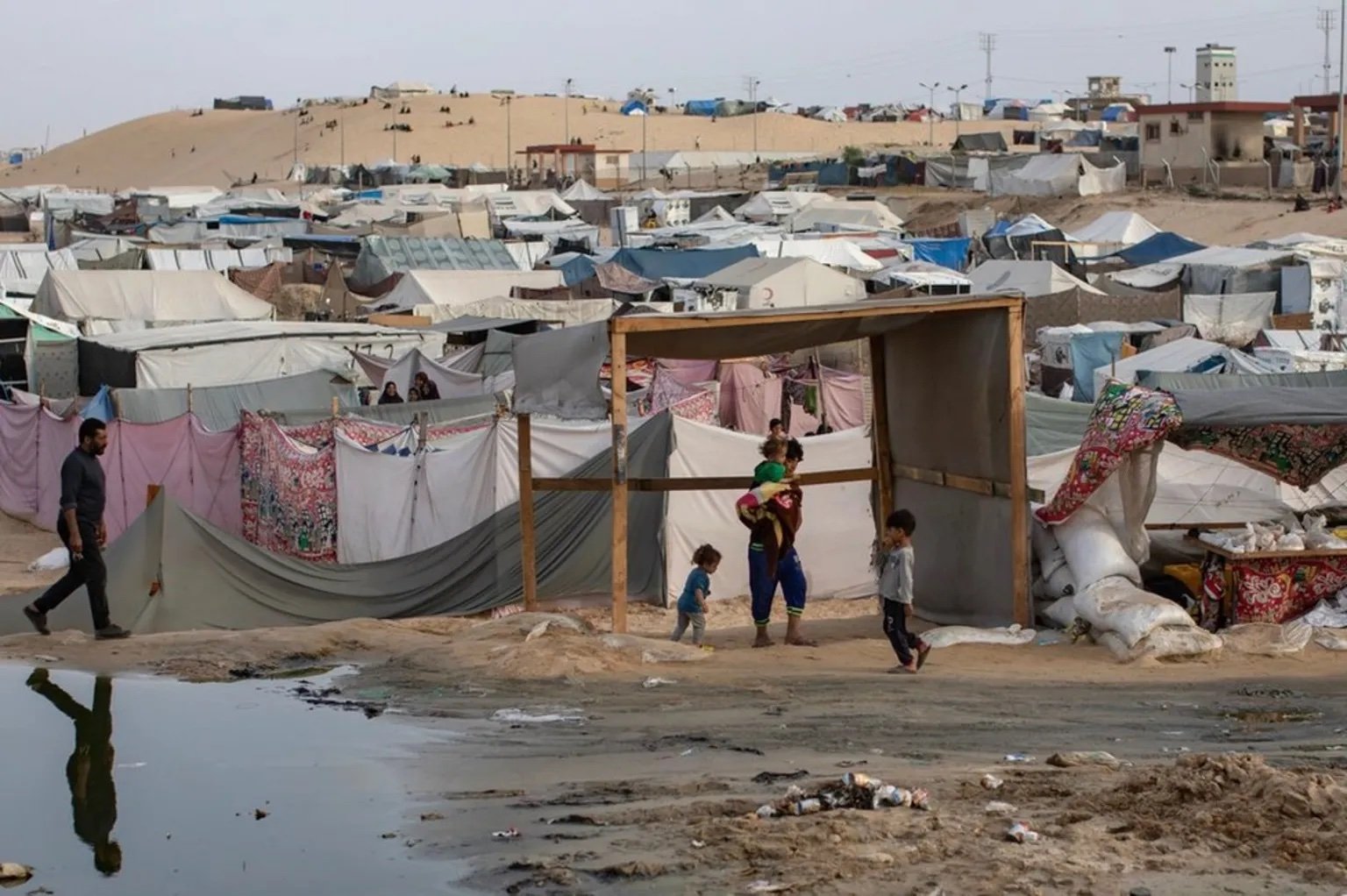Reconstruction: Gaza
2010 Strategies to support self-reliance in rebuilding
In 2010 Architecture for Humanity collaborated with a number of local NGOs to create a self-build repair strategy after the 2008-2009 “Operation Cast Lead” offensive caused widespread destruction across the Gaza Strip. When our team was asked to work with local groups, we discovered that little repair and even less rebuilding had occurred.
The Gaza Strip is one of the most densely populated areas in the world, and residential zones suffered significant damage during the offensive. During 2008 and 2009 over 61,000 homes were damaged and more than 20,000 people were newly displaced. Thousands of families were left living in sub-standard conditions. In the aftermath of Operation Cast Lead, needed construction materials were prevented from entering Gaza, and most organizations prepared to help rebuild were unable to do so. As a result, much of Gaza remained in ruins - with families left to rebuild their own homes.
Repairs and rebuilding was supported with cash assistance through the UNDP (United Nations Development Programme) and UNWRA (United Nation Relief and Works Agency). The cash, up to US$5,000 per family, was provided to over 54,000 families experiencing minor levels of damage to their home. With the dispersal, families were considered fully compensated. Some measures were taken to see that the funds were used for repairs, but only anecdotal information suggested that repairs have actually been made. Few organizations assisted in carrying out actual repairs to damaged or destroyed homes. It was likely that families have used the money to prioritize other needs.
This highlighted the importance of including monitoring the repairs as an integral part of the rebuilding process. Below are who documents, the 2010 Gaza Alternative Repair Strategies, a rebuilding manual (developed for Haiti) from 2011 and a basic roadmap for resilient reconstruction.
With the destruction of a majority of Gaza in the last six months, the lessons from 2010 should be a benchmark for understanding the enormity of the reconstruction process and why a coordinated, thoughtful and human-centered approach is the only way forward.
A Ten Point Roadmap for Resilient Reconstruction
1. Support an architectural coalition for long term reconstruction
Turkey and Syria needs more than a handful of well meaning architects, they need a highly coordinated coalition of building professionals that can dedicate their time and expertise to a myriad of projects. Associations, institutions and academia need to work together to ensure that there is equitable and highly distributed support for all affected communities. Groups like UIA, AIA, RIBA and TMMOB could support the development of such a coaltion.
2. Create Community-Based Anchors
In affected regions, organizations should partner with building professionals to set up rebuilding resource centers that will supply architecture and engineering services to community groups, NGOs, and social entrepreneurs on the ground.
3. Provide Building Expertise
Provide teams of architectural and construction professionals to develop and build community facilities, including schools and medical centers. These teams should be local and regional, with some international support. The full-time staff must also have a unique knowledge of disaster mitigation and long-term sustainable development.
4. Build a Construction Workforce
Train and educate incoming volunteers and community members in building safely, emphasizing the need for sustainable materials and construction techniques. It is not about just building homes, but jobs.
5. Distribute Lessons Learned
Translate and distribute the Rebuilding 101 Manual that was developed after earthquakes in Haiti and Japan. If we only share “best practices” we never really adapt and learn. A handbook of “what not to do” is far more valuable.
6. Earthquake-Resistant Housing Manual
Adapt, translate, and distribute an earthquake-resistant housing manual for local NGOs and community groups
7. Build Schools
We are working with partners to design, develop, and implement community and civic structures. Beyond the basic human right to give children access to eduction, if they don’t have a place to go, parents can’t work, and there is no economic stability. Schools are the focal point in community recovery.
8. Safe, Secure, and Sustainable Housing
It is our job to build homes that are not only safe but incorporate the needs, desires, and dreams of the families that will live in them. Additionally, we are not just building a roof over someone’s head—we are building equity. Through the reconstruction process we can support better building codes by building tangible examples of what the future will look like.
There is no single solution to responding to crisis or prescribed answer to a community need. By designing and building highly adaptable solutions that are relevant to the context and involve the community as a partner, we can build a bright green future
9. Support Social Entrepreneurs and Job Creation
As in many of our previous post-disaster programs, we worked with women’s empowerment groups and artisans to help rebuild their facilities, speeding up job creation and the ability to distribute micro-loans.
10. Share Everything
If your focus is social change, not financial gain, it is only truly innovative if it is shared. All of the works we produce are shared openly. By connecting with other NGOs and open sourcing construction documents, we can influence many building programs in the region. We can leave a legacy of innovative, locally appropriate solutions to protect from future disasters.



